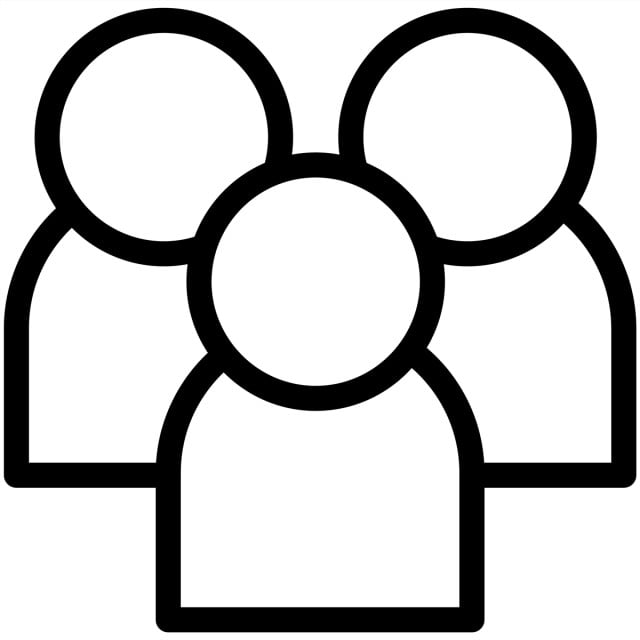This year has been a roller coaster right for mobile developers in the flutter development segment. Since they had a plethora of alternatives for developing their apps, the launch of Flutter 2.0, changed the entire scenario and the community discovered their new obsession to pay attention to. For the undiscovered, Flutter is a Google open-source development kit used to create native apps for both Android and iOS. However, that was four years ago, and Google now has a whole new design and features and benefits if you are looking to hire flutter developers for your next project.
Join us as we delve into the subtleties of Flutter 2.0’s features, capabilities, benefits, and utilities as it gradually gains equal citizens status with its peers.
What Is Flutter?
Google’s Flutter is a free and open-source framework that helps create attractively, natively built, multi-platform apps from a single codebase. It assists you in realizing your ideas by creating applications that provide a satisfying experience regardless of the operating system for which you are developing. Flutter was built as a mobile UI framework to provide Indian flutter developers the flexibility, convenience, and speed that they needed to create feature-rich native apps for iOS and Android. Flutter developers may create apps for both iOS and Android using the same programming language and codebase.
With no programming or development skills, you can create the complete UI by merging different widgets. Flutter offers ready-made widgets, so OEM widgets are not required, and you can even design your own widgets. Dart, Google's object-oriented programming language, is used to create Flutter applications. Dart compiles directly into native code, so the app appears and feels to the user like any other Windows program. However, with stateful hot reload support, you have the productivity of an interactive environment that allows you to make changes while your program is running and see the consequences instantly. Flutter is currently used by over half a million applications, including those from betterment BMW, and ByteDance.
Now that we know what flutter is used for let’s understand the new features they have rolled out.
Web Ready
Google's major objective with Flutter 2 is to change the way developers create applications. The idea is that developers should have enough bandwidth to focus on the experience they want to create rather than the platform for which they are building the application. The Flutter 2 release added production-quality web support, allowing developers to make use of web innovation features like as rich app programming interfaces, flexible layouts, and hardware-accelerated graphics (Both 2D and 3D)
Google has focused Flutter 2 on three web application scenarios-
- Progressive web apps that integrate internet connectivity with desktop software capabilities.
- SPAs that only require a single load to transmit data to and from web services.
- Adapting current Flutter applications for web use
Flutter 2 allows mobile app developers to access the web space while using the same codebase they use to create mobile apps. This makes good commercial sense and simplifies code. People can now utilize their favorite services without having to install anything, while Indian flutter developers can now create for the web platform without having to learn a new language.
Improved Usability
Flutter 2 further emphasizes the evolution of Flutter from a UI Toolkit to an all-encompassing software development toolkit. In a nutshell, Flutter 2 is Google's answer for getting to inaccessible locations. Existing Flutter App development for Google Play will receive a free upgrade to Flutter 2, allowing app owners to reach desktop users without making any code changes. Flutter 2 has worked hard to improve app speed on the web, and to that end, it has developed a new rendering engine backed by CanvasKit, text autofill capabilities, control over address bar URLs, and routing. Flutter 2 additionally has keyboard shortcuts, interactive scrollbars, and accessibility settings for all major operating systems.
Support for several platforms
Flutter's initial stable build, released in 2018, was designed to be platform-agnostic (read mobile-platform). It was created to let developers construct apps that felt and functioned like they were native to the platform on which they were running. Codesharing was also prioritized in order to reduce duplication of work. This ethos is carried forward in Flutter 2, which focuses on platform-specific considerations such as interaction (keyboard and mouse setups or touch and swipe screens), optimization for multiple screen sizes, and multilingual user input. Flutter 2.0 now features internationalization support with IME editors for a wide range of user languages, new desktop widgets including TreeView and DataTable, and improved support for Apple development machines.
Folio Flutter
Flutter 2.10 features now support three distinct platforms for production apps: Android, iOS, and the web. It is also in beta for three more platforms: Windows, macOS, and Linux. With such a large user base, it may appear impossible for a developer to create an app that operates smoothly and adjusts to form factors such as screen size and various input options (keyboard and mouse, touch, etc.) To solve these concerns, Flutter 2 launched Flutter Folio, a plain and simple example of a Flutter application. (To put it another way, it operates on various platforms from a single codebase.) Folio is intended to be a template for an application that uses Flutter 2 and looks nice on all screen sizes, supports different input methods, and works well for platform-specific idioms such as desktop menus and web links. Flutter folio intends to demonstrate Flutter 2.10's platform adaptability features also providing easy access to its source code.
Open-source
Another reason why Flutter development is the greatest mobile development framework is that it is open-source. Over the last few years, the open-source movement has gained a lot of traction. Big heavyweights like Facebook and Microsoft have left their imprint on the field, and Google is likewise well-versed in open-source. Amazon, Facebook, Google, and Microsoft compete frequently, yet they all coexist nicely in the open-source sector. With over 15000 packages available, Flutter has become the newest flavor in the open-source developer community. Given the open-source world's neutrality, the great majority of non-Google businesses such as Adobe, Amazon, and Microsoft have contributed to the release of Flutter 2.10’s features. Microsoft received a well-deserved special mention for a few key achievements, mostly centered on its focus on devices with the recently arriving foldable form factor. Microsoft has been frequently releasing code to support this design, allowing apps to take advantage of the particular features of this form factor. Given that Google needed comprehensive industry buy-in for Flutter 2 to thrive, Flutter 2's continuous presence in the open-source community is a well-thought-out plan. Developers are also motivated to stay close with full access to its codebase. Giving Indian flutter developers the ability to follow code directly back to the stack is a huge plus for a UI framework, assuming that the framework itself is never a limiting issue during flutter App development.
Consistent Coding
Flutter2, like its predecessor, is ready to power apps across app stores thanks to its rapid and uniform code. Flutter-powered apps now number over 150,000 in Google's Play Store. When it comes to developing applications, Google strongly supports Flutter 2. Google Pay, Google Ads, Google Nest Hub, Google Analytics, and a slew of additional Google Apps are presently available on Flutter. An outside perspective describes how organizations from many business verticals have chosen to build their apps using Flutter and are anxiously awaiting the move to Flutter 2. The list includes real estate listing portals, IT heavyweights, finance firms, and audio system manufacturers. Flutter and Flutter 2 have such a compelling value proposition because of the core idea of robust and uniform cross-platform code.
Duplication And Framework Limits Have Been Removed.
Flutter is still a relatively new platform by most standards, but its designers have solid proof of its quick development and improving capacity to address need gaps. In fact, Flutter is a highly appealing alternative for both new and existing businesses. Enterprises across the world picked Flutter for two primary reasons. The first is to eliminate effort duplication, i.e., designing stand-alone apps for each targeted platform and dealing with concerns such as sim-shipping, UI consistency, and various second-order issues. The second issue that Flutter 2.0 features addresses is that businesses are compelled to invest significant financial resources in the establishment and management of their brand portfolio. However, the economic activities of these organizations' digital properties are frequently hampered by platform/framework constraints. Flutter, and now Flutter 2, provide total control to organizations while proactively resolving limiting concerns, making it a highly valuable tech asset.
Flutter DevTools
Google has worked hard to bring Flutter DevTools up to Flutter 2 production quality. With Flutter 2, you may detect bugs even before you start DevTools by integrating Android Studio, Visual Studio Code, and IntelliJ to find common errors and display them in DevTools to help you debug them. The 'Invert large Images' option has been added to the Flutter inspector. Images with higher resolutions than their display size are presented inverted when this option is enabled, making them easier to discover in the app being created. The Flutter inspector's Layout Explorer now has the ability to display fixed layouts, allowing for easier debugging.
And that isn't all. Here are a couple more of Flutter DevTools 2.10's new features:
- FPS information has been enhanced, and the frame charts have been improved.
- Failed network requests are labeled in red.
- Memory view charts that are more ergonomic
- Tab filtering for enhanced search and logging
- On CPU profiler flame charts, there is a timing grid.
Wrapping Up
Now that we’ve learned everything there is to know about Flutter 2 development, it’s time to learn why it has such a wide variety of capabilities. It comes as no surprise to the experienced eye that Dart is the secret sauce underlying Flutter 2’s capabilities. Flutter 2 is now extremely portable thanks to Dart. Dart may be used to develop code in Flutter 2 and then easily recompile it to JavaScript, the most popular online programming language at the moment. In conclusion. Taking all factors into account, Flutter 2 is a solid release that is positioned to become Google’s de facto development platform. ManekTech has 200+ domain specialists that are highly educated in cross-platform app development on the newest platforms, including Flutter 2. They have vast expertise in Flutter application development and a spirit of continuous innovation that fosters constant learning and upskilling. so, if you want to create high-performance corporate apps and drive value through rich engagement experiences using FLutter 2, we would be happy to assist you.
Subscribe to Our Newsletter!
Join us to stay updated with our latest blog updates, marketing tips, service tips, trends, news and announcements!




![How to Patent an App Idea in 2024? [A Complete Guide]](https://mt.dev-project-server.com/storage/blog/image/1699424466.webp)

















